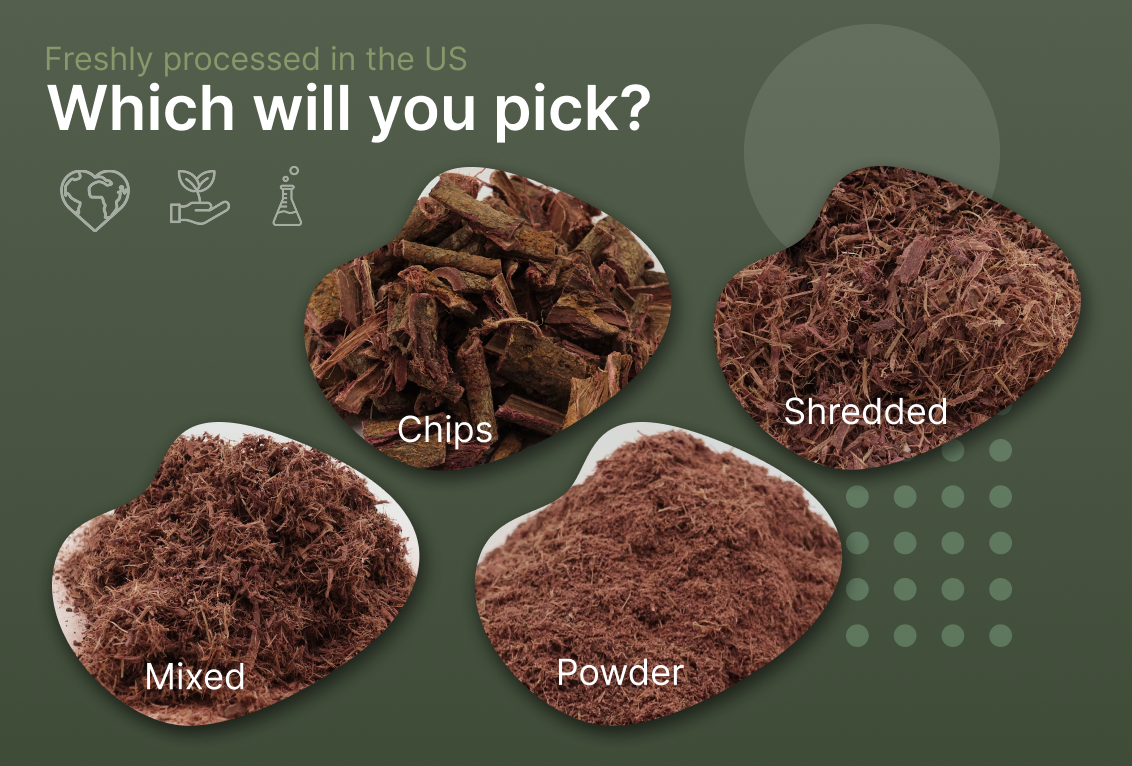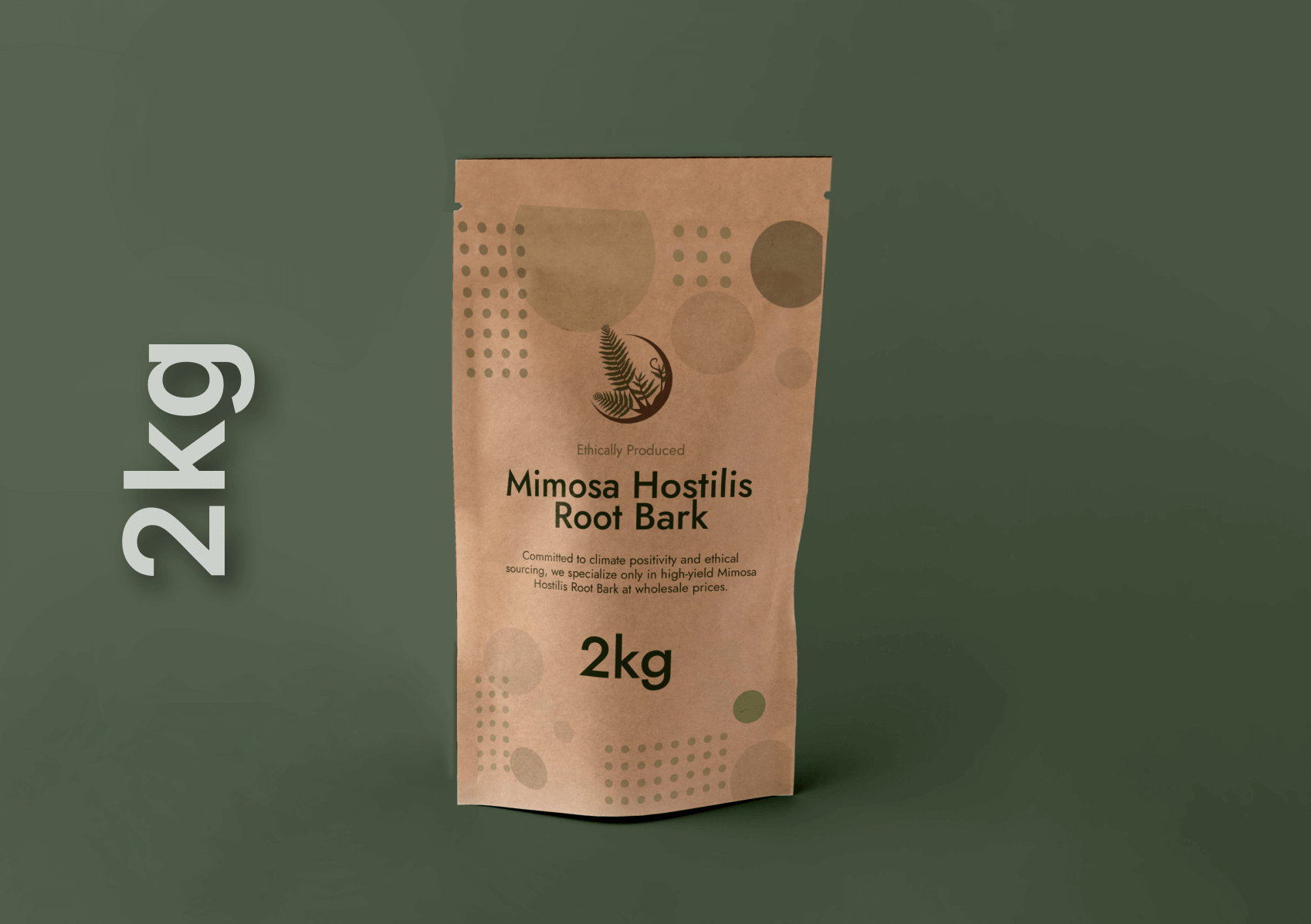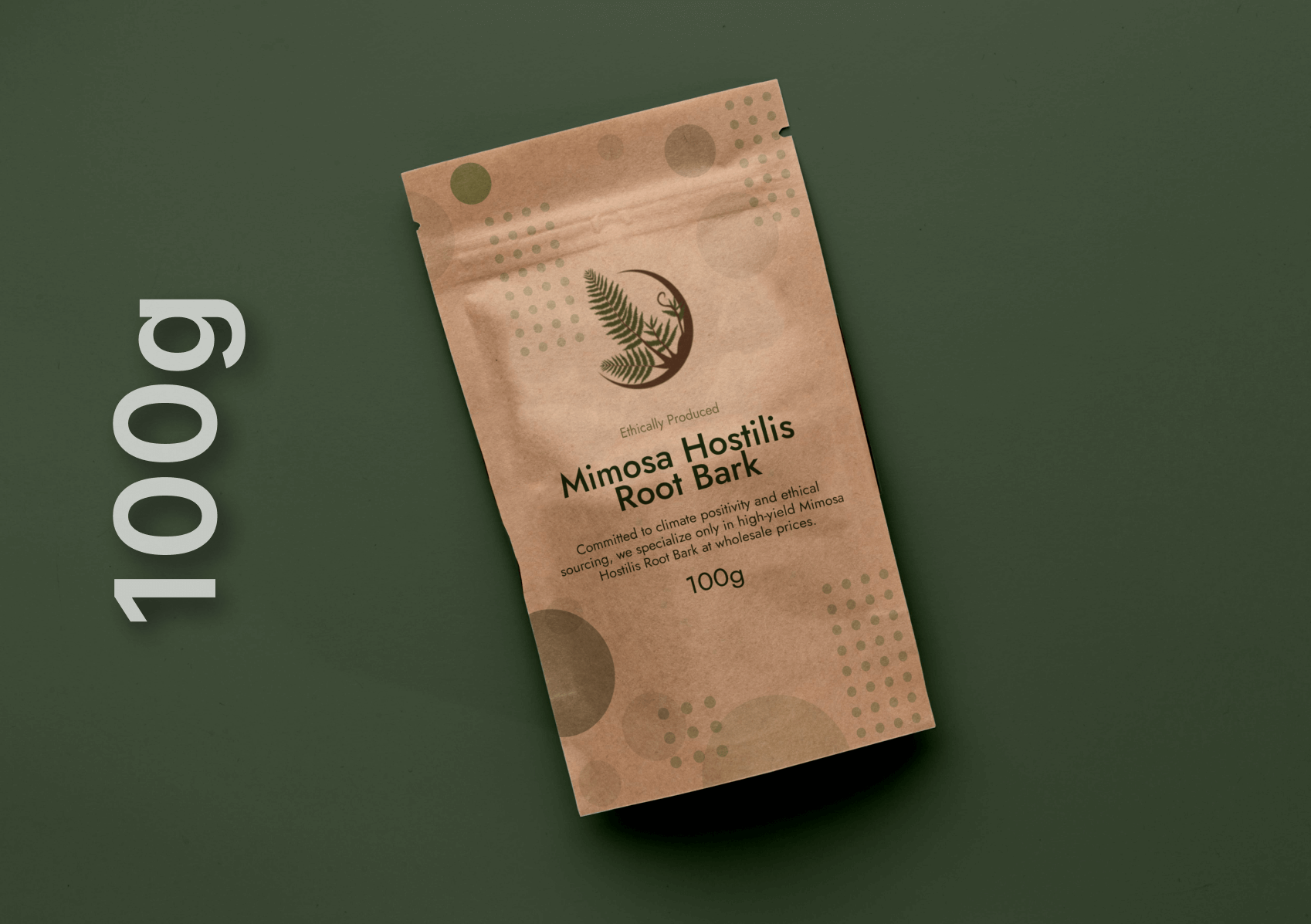Understanding Mimosa Hostilis in Traditional Context: The Basics
What is Mimosa Hostilis in Shamanic Traditions?
Mimosa Hostilis (Mimosa tenuiflora) holds profound significance in traditional shamanic practices across Central and South America. Indigenous communities have worked with this sacred tree for centuries, recognizing its powerful spiritual and medicinal properties. The root bark, known locally by various names including Jurema Preta and Tepezcohuite, serves as a cornerstone in ceremonial practices and healing traditions.
The tree’s spiritual importance extends beyond its chemical composition. Traditional healers view Mimosa Hostilis as a teacher plant, capable of facilitating deep introspection and spiritual healing. This perspective differs significantly from modern commercial applications, emphasizing the plant’s role in maintaining cultural identity and ancestral knowledge.
Historical Significance in Indigenous Cultures
Archaeological evidence suggests that indigenous peoples of Brazil’s Northeastern regions have used Mimosa Hostilis for over 1,000 years. The Pankararu, Fulni, and other indigenous groups incorporate the plant into their most sacred ceremonies. These traditions represent living cultural heritage, passed down through generations of shamans and spiritual leaders.
Colonial records from the 16th century document Spanish and Portuguese encounters with indigenous ceremonies involving Jurema. These historical accounts, though often biased, provide valuable insights into the plant’s traditional preparation methods and ceremonial context. Modern ethnobotanical research continues to validate many traditional uses documented in these early writings.
Sacred Preparation Methods
Traditional preparation of Mimosa Hostilis follows strict ceremonial protocols. Indigenous shamans harvest the root bark using specific lunar cycles and perform blessing rituals before processing. The preparation involves careful grinding of the inner root bark, often combined with other sacred plants to create ceremonial brews or smoking blends.
These preparation methods emphasize respect for the plant’s spirit and acknowledgment of its teaching properties. The process itself becomes a form of prayer, with shamans maintaining specific dietary restrictions and performing purification rituals throughout the preparation period.
Ceremonial Applications and Protocols
Mimosa Hostilis ceremonies typically occur during significant community events, healing sessions, or seasonal celebrations. The plant serves multiple roles within these contexts – as a healing medicine, spiritual teacher, and connector to ancestral wisdom. Ceremonies often last several hours and involve group participation under the guidance of experienced shamans.
Traditional protocols emphasize the importance of proper set and setting. Participants undergo preparation periods involving dietary restrictions, meditation, and intention-setting. The ceremonial space receives blessing through incense, prayers, and the arrangement of sacred objects representing the four directions and natural elements.
Regional Variations in Traditional Use
Different indigenous groups across Brazil’s Northeastern states have developed unique approaches to working with Mimosa Hostilis. The Atikum people focus on healing ceremonies, while the Xukuru incorporate the plant into coming-of-age rituals. These regional variations demonstrate the plant’s versatility and cultural adaptability while maintaining core spiritual principles.
Contemporary research documents at least twelve distinct indigenous groups with active Jurema traditions. Each maintains specific songs, prayers, and ceremonial procedures that reflect their unique cultural identity and spiritual understanding of the plant’s properties.

The Current Landscape of Traditional Mimosa Hostilis Practice
Modern Challenges to Traditional Use
Contemporary indigenous communities face significant challenges in maintaining traditional Mimosa Hostilis practices. Deforestation, urbanization, and legal restrictions threaten both the plant’s natural habitat and the cultural contexts necessary for traditional ceremonies. Many young indigenous people migrate to cities, creating gaps in traditional knowledge transmission.
Climate change affects the tree’s natural growing cycles, forcing traditional harvesters to adapt their collection methods. Increased commercial demand for the root bark creates additional pressure on wild populations, sometimes conflicting with sustainable traditional harvesting practices that allow trees to regenerate naturally.
Cultural Preservation Efforts
Indigenous organizations across Brazil work actively to preserve traditional Jurema knowledge. The Fundação Nacional dos Povos Indígenas (FUNAI) supports documentation projects that record ceremonial protocols, traditional ecological knowledge, and preparation methods. These efforts ensure that younger generations can access their cultural heritage despite external pressures.
Academic partnerships between universities and indigenous communities create opportunities for respectful research that validates traditional knowledge while protecting intellectual property rights. These collaborations often focus on sustainable harvesting methods and habitat conservation strategies developed through generations of traditional practice.
Legal Framework and Indigenous Rights
Brazilian law recognizes indigenous peoples’ constitutional right to practice traditional ceremonies, including those involving Mimosa Hostilis. This legal protection extends to the sustainable harvesting of plants from traditional territories, though implementation often faces bureaucratic challenges.
International indigenous rights frameworks support the protection of traditional plant medicines and ceremonial practices. The United Nations Declaration on the Rights of Indigenous Peoples specifically addresses the importance of maintaining traditional spiritual practices and access to sacred sites and medicines.
Integration with Modern Healing Approaches
Some indigenous communities explore integrating traditional Mimosa Hostilis practices with modern healthcare systems. Collaborative programs between traditional healers and medical professionals create opportunities for holistic healing approaches that respect both indigenous knowledge and contemporary medical understanding.
These integration efforts focus on areas where traditional knowledge can complement modern treatments, particularly in mental health and trauma healing contexts. Research partnerships examine how traditional ceremonial contexts might inform therapeutic approaches while maintaining cultural authenticity and respect.
Exploring Traditional Applications: Sacred and Healing Uses
Spiritual Healing and Soul Retrieval
Traditional shamans use Mimosa Hostilis for soul retrieval ceremonies, addressing spiritual illnesses believed to result from soul fragmentation or loss. These healing sessions involve complex diagnostic procedures where shamans identify spiritual imbalances and design specific ceremonial interventions using the plant’s teaching properties.
Soul retrieval work with Jurema often addresses trauma, grief, and spiritual disconnection. Traditional healers report that the plant facilitates communication with spirit guides and ancestors who assist in locating and reintegrating lost soul parts. These ceremonies can span multiple days and involve various healing modalities including plant medicine, prayer, and energy work.
The healing process emphasizes restoration of spiritual wholeness rather than symptom management. Participants often report profound shifts in their sense of identity, purpose, and connection to their community and natural environment following traditional Jurema healing ceremonies.
Divination and Prophetic Vision
Indigenous shamans employ Mimosa Hostilis to enhance divination abilities and receive prophetic visions about community welfare, weather patterns, and spiritual guidance. These divination sessions require extensive preparation and occur only during specific astronomical events or community crises requiring spiritual guidance.
Traditional divination protocols involve complex ritual preparations including fasting, isolation, and intensive prayer. Shamans enter altered states of consciousness that facilitate communication with plant spirits, ancestors, and natural forces. The resulting visions provide guidance for community decisions, healing protocols, and spiritual direction.
Documentation of traditional divination practices reveals sophisticated understanding of consciousness alteration and spiritual communication. These practices contribute to community decision-making processes and maintain connection between human communities and the natural world.
Ancestral Communication and Guidance
Jurema ceremonies facilitate direct communication with deceased ancestors who continue to guide and protect their descendants. Traditional belief systems view death as a transition rather than an ending, with ancestors remaining accessible through ceremonial plant medicine work.
Ancestral communication sessions address family conflicts, provide guidance about important life decisions, and maintain connection to cultural identity across generations. Shamans serve as intermediaries, facilitating conversations between living community members and their ancestral guides.
These communication practices strengthen family bonds and cultural continuity. Young people often participate in ancestral communication ceremonies during important life transitions, receiving guidance about their role within the community and connection to cultural traditions.
Community Healing and Conflict Resolution
Traditional communities use Mimosa Hostilis ceremonies to address collective trauma, resolve interpersonal conflicts, and strengthen community bonds. These group healing sessions bring together multiple families or entire villages to address shared challenges and restore social harmony.
Community healing ceremonies often address historical trauma, environmental challenges, and social conflicts that affect multiple generations. The plant’s properties facilitate empathy, understanding, and forgiveness among participants, creating opportunities for genuine reconciliation and community healing.
Conflict resolution through Jurema ceremonies emphasizes restorative rather than punitive justice. Participants explore the spiritual and emotional roots of conflicts, seeking solutions that honor all parties while maintaining community harmony and cultural values.
Seasonal and Agricultural Ceremonies
Indigenous agricultural practices incorporate Mimosa Hostilis ceremonies to ensure successful planting, growing, and harvest seasons. These ceremonies maintain spiritual connection between human communities and the natural cycles that support traditional food systems.
Seasonal ceremonies often coincide with solstices, equinoxes, and lunar cycles that influence plant growth and weather patterns. Shamans use plant medicine to communicate with nature spirits, requesting favorable conditions for crops and guidance about optimal planting times.
Agricultural ceremonies demonstrate the integration of spiritual practice with practical life needs. Traditional communities view successful farming as requiring both technical knowledge and spiritual cooperation with natural forces, making ceremonial plant medicine work essential for food security.
Initiation and Rites of Passage
Mimosa Hostilis plays a central role in traditional initiation ceremonies that mark important life transitions including puberty, marriage, parenthood, and spiritual calling. These rites of passage use plant medicine to facilitate psychological and spiritual transformation necessary for new social roles.
Male initiation ceremonies often involve vision quests where young men receive spiritual names, discover their life purpose, and establish relationships with guardian spirits. Female initiations focus on connecting with feminine wisdom, understanding reproductive cycles, and preparing for roles as mothers and healers.
Shamanic initiation represents the most intensive use of traditional plant medicine, often involving extended isolation, fasting, and multiple ceremonial sessions. Aspiring shamans undergo years of training that includes developing relationships with plant spirits and learning to facilitate healing for others.
Traditional Preparation and Administration Methods
Traditional Mimosa Hostilis preparation involves specific grinding, brewing, and blessing techniques passed down through shamanic lineages. These methods emphasize the spiritual aspects of preparation, treating the process as a sacred activity that begins the ceremonial work.
Preparation protocols vary among different indigenous groups but commonly involve harvesting inner root bark during specific lunar phases, grinding the material using traditional tools, and combining it with other sacred plants according to ancient recipes. Each step requires specific prayers and offerings.
Administration methods include brewing teas, creating smoking blends, and preparing topical applications for healing purposes. Traditional healers determine appropriate doses and administration methods based on individual needs, ceremonial context, and spiritual guidance received during preparation.
Integration of Traditional Knowledge with Modern Understanding
Contemporary ethnobotanical research validates many traditional uses of Mimosa Hostilis while deepening scientific understanding of the plant’s properties. Collaborative research projects between indigenous knowledge keepers and academic researchers create opportunities for mutual learning and knowledge integration.
Modern analysis of traditional preparation methods reveals sophisticated understanding of plant chemistry and pharmacokinetics. Traditional brewing techniques optimize the extraction of active compounds while incorporating other plants that modify effects and reduce potential adverse reactions.
Integration efforts focus on preserving traditional knowledge while making it accessible to contemporary practitioners working respectfully with indigenous plant medicines. These efforts emphasize proper training, cultural education, and ongoing relationships with traditional knowledge keepers.
Sustainable Traditional Harvesting Practices
Traditional harvesting methods for Mimosa Hostilis emphasize sustainability and respect for the plant’s life cycle. Indigenous harvesters remove only specific portions of root bark, allowing trees to regenerate naturally while maintaining their ceremonial potency.
Traditional ecological knowledge includes understanding of optimal harvesting times, sustainable collection ratios, and habitat management practices that support healthy Mimosa Hostilis populations. This knowledge develops through generations of observation and spiritual communication with plant spirits.
Modern conservation efforts often adopt traditional harvesting guidelines as models for sustainable wild collection. Indigenous practices demonstrate how spiritual respect for plants translates into practical conservation methods that ensure long-term availability of sacred medicines.
Cultural Protocols and Respect Guidelines
Working respectfully with traditional Mimosa Hostilis practices requires understanding and honoring indigenous cultural protocols. Non-indigenous practitioners should seek proper training from traditional teachers and maintain ongoing relationships with indigenous communities rather than appropriating isolated techniques.
Cultural protocols include understanding the spiritual significance of plant medicine work, respecting traditional preparation methods, and acknowledging the indigenous origins of this knowledge. Ethical practice involves supporting indigenous communities and their rights to traditional territories and sacred practices.
Educational initiatives help practitioners understand the difference between cultural appreciation and appropriation. Respectful engagement requires long-term commitment to learning traditional contexts, supporting indigenous rights, and practicing with proper supervision and cultural understanding.
Future Directions in Traditional Practice Research
Ongoing research into traditional Mimosa Hostilis practices focuses on documentation, preservation, and respectful integration with contemporary healing approaches. Academic institutions increasingly recognize the value of indigenous knowledge systems and develop collaborative research methodologies.
Future research directions include studying the therapeutic potential of traditional ceremonial contexts, documenting regional variations in practice, and developing models for ethical integration with modern healthcare systems. These efforts require ongoing partnership with indigenous communities and respect for intellectual property rights.
Climate change and habitat loss create urgency around documenting traditional practices and supporting conservation efforts. Research initiatives focus on understanding how traditional knowledge can inform contemporary conservation strategies while supporting indigenous communities in maintaining their cultural practices.
Conclusion
MHRB occupies a central position in traditional shamanic practices across indigenous communities of Central and South America. The plant’s role extends far beyond its chemical properties, encompassing spiritual healing, ancestral communication, community harmony, and cultural preservation. Traditional uses demonstrate sophisticated understanding of consciousness, healing, and the interconnection between human communities and the natural world.
Contemporary challenges including deforestation, legal restrictions, and cultural disruption threaten traditional Mimosa Hostilis practices. However, indigenous communities, academic researchers, and conservation organizations work collaboratively to preserve traditional knowledge while supporting sustainable use practices and cultural continuity.
The integration of traditional knowledge with modern understanding creates opportunities for respectful collaboration that honors indigenous wisdom while contributing to contemporary healing approaches. This integration requires ongoing commitment to cultural respect, indigenous rights, and sustainable practices that ensure the availability of this sacred plant for future generations.
Understanding traditional Mimosa Hostilis practices provides valuable insights into holistic healing, community wellness, and sustainable relationships with plant medicines. These ancient traditions offer important teachings about consciousness, spirituality, and the fundamental connection between human health and environmental stewardship. Preserving and respecting these practices contributes to global cultural diversity and the maintenance of traditional ecological knowledge that benefits all humanity.
Frequently Asked Questions
What is mimosa hostilis used for in shamanic practices?
Is mimosa hostilis legal for shamanic ceremonies?
How do shamans prepare mimosa hostilis for ceremonies?
What cultures traditionally use mimosa hostilis in shamanic rituals?
Can anyone participate in mimosa hostilis shamanic ceremonies?




